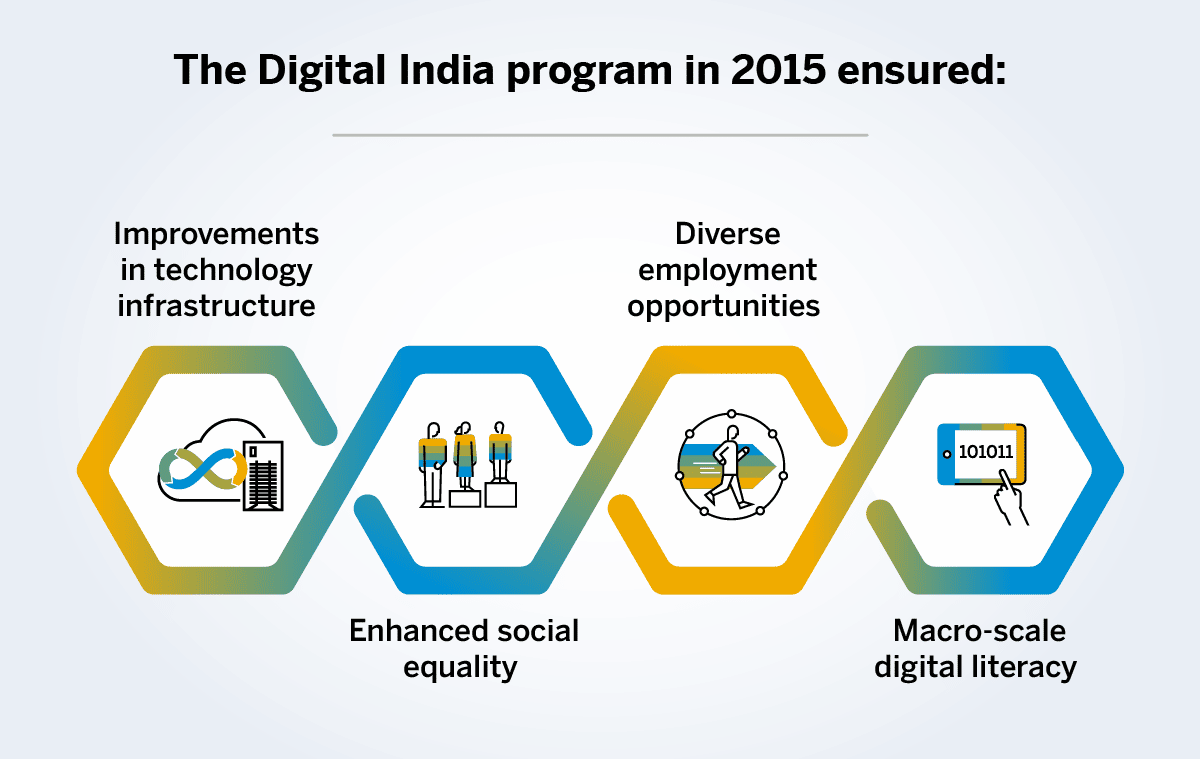Digitalization, without question, has become one of the most important trends in India over the past few years. The “Digital India” program launched in 2015 brought significant improvements in technology infrastructure that have enhanced social equality, employment opportunities, and digital literacy for all people.

To date, nearly two-thirds of the Indian population use the Internet regularly ‒ with millions of connections made through the immediate convenience of a mobile device. From watching films and TV shows, ordering from restaurants, and booking cab and flight tickets to buying clothes and groceries and paying bills, a digital transformation is well underway in everyday life of consumers.
Introducing a critical addition to India’s economy
The move toward greater digitalization is driven by a partnership with the public and private sectors to help turbocharge India’s standing as a competitive global economy, an effort that has brought the entire nation together across the digital divide.

In fact, according to the McKinsey Global Institute, lower-income states have outpaced higher-income regions in Internet infrastructure and subscriptions since 2019. The Indian government has also enrolled more than 1.2 billion citizens into its biometric digital identity program to provide public services and financial assistance – creating the largest program of its kind in the world to date.
More importantly, India’s midsize companies are beginning to benefit from the immense potential of this digital growth. The adoption of cloud technology is leveling the playing field with larger competitors – growing faster and expanding their consumer reach rapidly.
Brimming with potential in the cloud
In a world of widespread border closures and widening gaps, midsize companies throughout India play a critical role in shaping digital transformation that serves everyone. While it is largely perceived that large enterprises generally adopt technology faster, the evolution of cloud technology and its affordability have accelerated, increasing the global competitiveness of small businesses.
For many growing companies, cloud solutions are the answer for contributing to India’s aspiration to become a $5 trillion economy. Access to enterprise data management, buyer and supplier networks, contactless systems, intelligence and analytics, and software-led systems is creating new opportunities in how products are designed, engineered, sold, consumed, and serviced.
The RISE with SAP solution, for example, enables businesses to take advantage of these capabilities in the cloud in a modular way that best meets their needs. The solution comprises a portfolio that includes a modern cloud ERP – SAP S/4HANA Cloud – and services from SAP experts and partners.
The impact of such cloud-based innovation is increasingly visible as India emerges as an economic superpower. Companies with a hypergrowth mindset, especially startups, are working collectively with their suppliers, retail partners, business-to-business customers, and consumers with a single-minded obsession for becoming globally competitive with a digital-first mindset.
According to the IDC infobrief commissioned by SAP, 68% of Indian midsize businesses are expected to increase their IT spending in 2022. But more striking is the fact that 74% are committed to moving to the cloud. Think of the possibilities of this cloud transformation: upwards of 14 million direct and indirect jobs can be created throughout India, contributing $380 billion to India’s GDP by 2026.
Arriving at a platform for accelerated growth
If India expects to become an economic superpower within the next five years, midsize businesses need the right tools, data insights, and engagement channels to compete and grow in the global marketplace. And that success depends on their transformation with technology that can scale fast enough to keep up with the changing expectations of India’s consumers and workforce.
This article was originally published on forbes.com.
